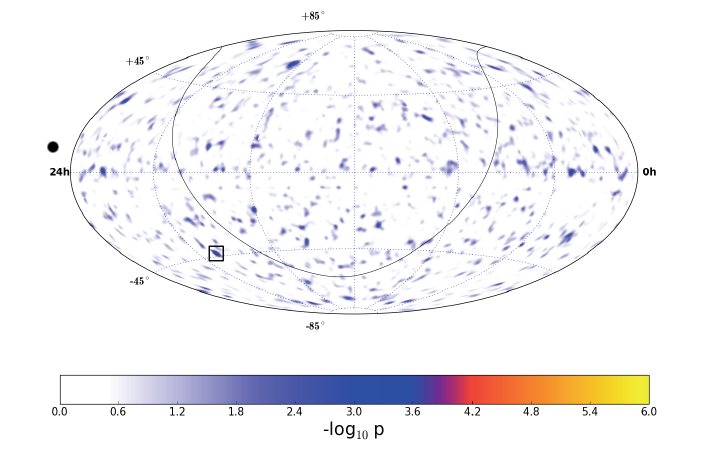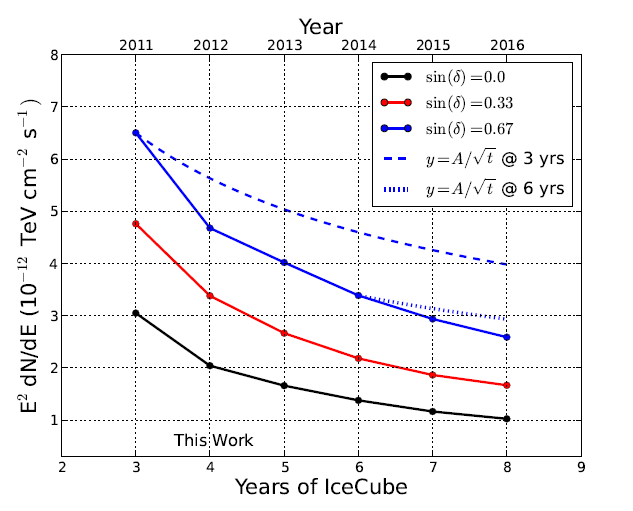A few years after the completion of IceCube, one of the major goals of building this strange cubic-kilometer detector at the South Pole has already been accomplished: the unequivocal observation of an astrophysical neutrino flux. However, we’re still waiting for the discovery of the sources of high-energy neutrinos, but hopefully only for a few more years.
Results of a search for point sources using three years of data were announced by the IceCube Collaboration just one year ago. Now the collaboration is presenting an update of that search including a new year of data. Results of an all-sky survey looking for extended regions of neutrino emission and of new searches using point-source as well as stacked-source catalogs are also presented in the paper. No evidence of neutrino emission has been found yet, but a few models have been ruled out. With increased statistics provided by new IceCube data and improvements in the analysis techniques, the collaboration will be able to test a wider variety of neutrino point source models in the coming 5 years. This research has been submitted today to The Astrophysical Journal.

As with the 2013 search, these non-discovery results allowed IceCube researchers to test a few neutrino emission models. The search for neutrino emission from the Crab Nebula, for example, had already excluded the most optimistic model (Link & Burgio) using only three years of data. The updated search with a fourth year of data has also ruled out the model from Amato et al. The IceCube 90% confidence level upper limit for a third model by Kappes et al is now a factor of 1.75 above the prediction.
Our models also predict neutrino emission from extended regions in the sky, such as supernova remnants in our galaxy or large clusters of galaxies such as Virgo. A search for these types of sources has been performed for the first time with IceCube, with results consistent with the background-only hypothesis. Once more, the results allow for setting upper limits for our neutrino emission models, which have been found to be a factor of 3 above the model for three Galactic supernova remnants.
“We are also searching for neutrino emission from the Cygnus Region, with the six sources from Milagro. It will be exciting to soon be able to confirm or reject the acceleration of hadrons in this region. There have been hints of excesses in the past so we should keep looking,” says Mohamed Rameez, a graduate student at University of Geneva and corresponding author of this paper.
“We are now waiting for new data and working on better background rejection techniques and reconstruction algorithms to improve the discovery potential of the Antarctic neutrino detector,” says Jacob Feintzeig, a graduate student at UW-Madison and also one of the corresponding authors of this paper. The first discovery of a neutrino source might be around the corner!

+ Info “Searches for Extended and Point-like Neutrino Sources with Four Years of IceCube Data,” IceCube Collaboration: M.G. Aartsen et al. Astrophysical Journal 796 (2014), iopscience.iop.org, arXiv.org:1406.6757
